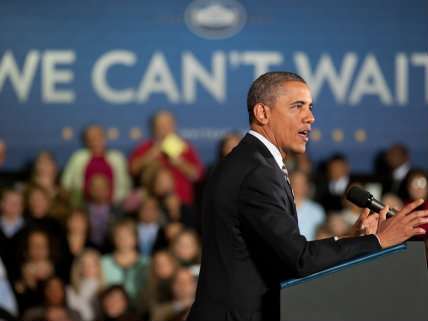5 Things to Know About President Obama's Budget Proposal

The most important thing to know about President Obama's budget proposal is that it won't go anywhere. It's not intended to, and the White House isn't even bothering to pretend otherwise.
Instead, it's an election-year wish list—or, if you prefer the White House's gentler spin, a statement of values. "Our budget is about choices, it's about values," President Obama said earlier this week. Here are a few of the choices his budget would have the nation make.
Annual spending would rise over the next decade. Outlays would grow from $3.9 trillion in 2015 to $5.91 trillion in 2024. In theory, the growth would be roughly commensurate with growth in the economy, ticking up just slightly from 21.4 percent of GDP to 21.5 percent over the course of a decade. But the White House has been coy with details about its assumptions regarding the projected growth rate of the economy, so it's hard to assess this beyond face value.
Tax revenues would rise as a percentage of the economy. Obama's budget would raise revenue levels closer to spending levels in order to sustain the spending while reducing annual deficits. Revenues would rise from $3.34 trillion, or 18.3 percent of the economy, in 2015 up to $5.48 trillion, or 19.9 percent of the economy, in 2024. That would be one of the highest annual levels in the nation's history.
The national debt would become even bigger. Annual deficits would decrease, according to administration projections, dropping down to 1.6 percent of the economy, thanks in large part to increased tax revenue levels that partially close the gap between collections and spending. But even smaller annual deficits still add to the federal tab. Over the next decade, the president's budget plan would leave us with a debt that's $8.3 trillion higher than it is now.
Growing debt would lead to bigger interest payments. This year, we'd spend $223 billion on debt service. By 2024, the president's proposal projects interest payments of about $812 billion.
The budget would never, ever balance. The White House even seems to have given up its old line about getting the budget into "primary balance"—a technical annual balance that ignores the interest cost of carrying a heavy debt load. (According to the Congressional Budget Office, that budget plan never reached primary balance either.)


Show Comments (20)